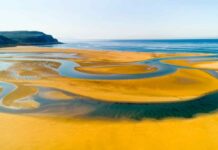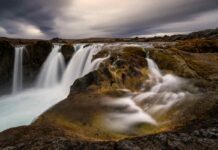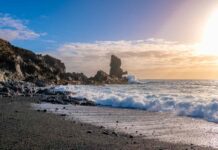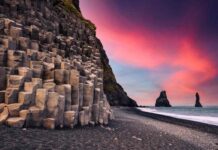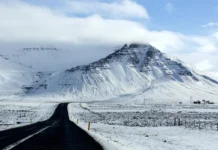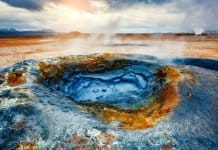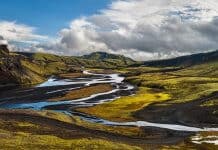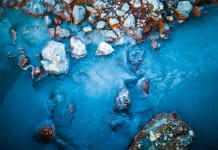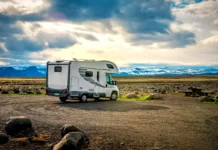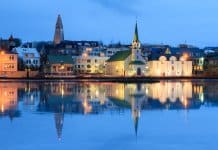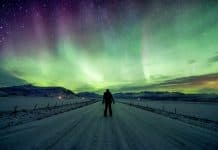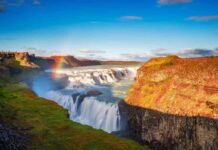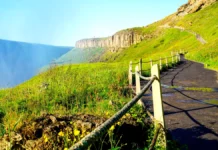One of Iceland’s monikers is The Land of Fire and Ice, and this nickname is certainly not in vain. There are approximately 130 volcanoes in the country, about 18 of which have erupted since the island was inhabited. Iceland in itself cannot be understood without the existence of these smoking titans. They literally created and shaped the island and provided the beginnings of the great country that we know today. Even with the intense activity of the past, Iceland’s volcanoes are still active. There are also signs that many of the sleeping giants are about to wake up from their temporary repose. Do you want to know the main volcanoes in Iceland? Let’s take a tour of Icelandic volcanoes!

The first and most important thing is to understand why there is so much volcanic activity in Iceland. Well, this is primarily due to the location of the island. It’s in the North Atlantic Ocean right on the Mid-Atlantic Ridge. This important zone is the meeting point between the Eurasian and the North American tectonic plates. The fissures in the seabed are where magma rises quickly and Iceland is itself the fruit of all this underwater volcanic activity. Something quite interesting is that the island was formed smack dab in the middle of the fault and both plates are moving away from each other in opposite direction. This means that in the future, it’s possible that Iceland will end up split in two.
For now, that event is pretty far away. In our time we’re much more likely to see some of Iceland’s sleeping giants abruptly awaken from their long slumber. Here’s a list of Iceland’s most popular volcanoes:
Iceland’s Volcanoes – Eyjafjallajökul
Unpronounceable names aside, this volcano put Europe’s entire airspace on hold for almost a week back in 2010. The volcano is in the south of the island, near the immense ice cap of Mýrdalsjökull and measures 1,666 meters (5,465 feet).

Eyjafjallajökul began to show signs of activity in April 2010 and did not officially stop until October of the same year. The volcano spewed huge amounts of lava and smoke that ended up expanding over almost all of the European continent and parts of North America. The volcano’s location near the jet stream and its explosive force cause all the smoke and ash to spread quickly through the airspace.
Iceland’s Volcanoes – Katla
Unlike its aforementioned companion, this volcano is still unknown for many outside of Iceland. That is quite likely to change, and soon. Katla is also located in the south of Iceland and near the well-known city of Vik. The volcano’s name means “teapot” and is 1,512 meters (4,960 feet) tall. It has begun showing signs of a slow awakening, with small earthquakes and little expulsions of steam. Is this the beginning of a new volcanic event in Iceland?
For experts, getting an exact measurement of the internal activity of the volcano is somewhat complicated. It’s located just below a layer of glacial ice that makes it impossible to observe its behavior correctly. No one is sure when it will decide to wake up. What authorities do know is that they must be prepared for all possible scenarios and their consequences.

Iceland’s Volcanoes – Askja:
Askja is a 50 km2 (31 sq mi) zone of volcanic craters formed by the collapse of the roof of magma chambers. In the area, there is not only one but several volcanoes like Viti. This area is one of the best known in Iceland since it is an extremely sought after tourist destination. It’s located in the northern part of Vatnajökull National Park. Its popularity is due to the accumulated water in the crater at a temperature of about 30 °C (86 °F). The natural wonder has become a bathing area in a spectacular environment.
Iceland’s Volcanoes – Snæfellsjökull
This volcano is more than 700,000 years old and is 1,466 meters (4,810 feet) tall. It is located in the western part of the Snæfellsnes peninsula and is very popular. It’s well-known because it’s the mountain which inspired Jules Verne for his novel “Journey to the Center of the Earth”. In it, the main characters find a secret passage inside the volcano that takes them to the heart of the Earth. At the moment there is no need to worry because it’s still asleep. So, if apart from visiting Iceland you want to go to the center of the Earth, this is your chance.
Nature’s Fury – Iceland’s Most Popular Volcanoes
Although there are hundreds more volcanoes, these are the best-known and most beloved. If you have the opportunity, do not hesitate to visit some of mother nature’s most impressive creations.

